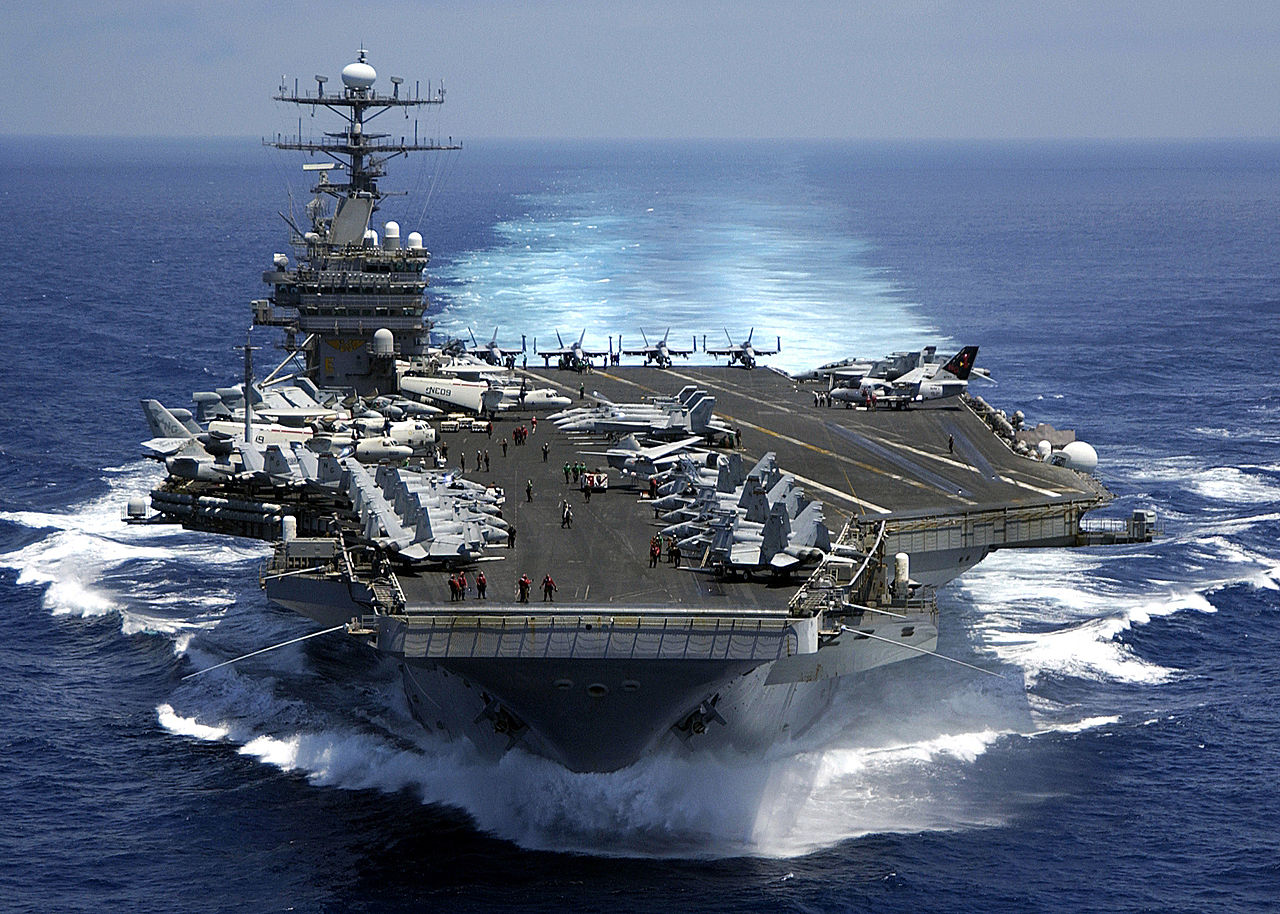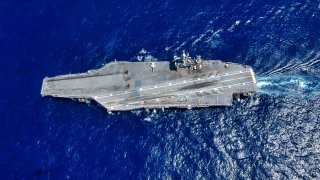The U.S. Navy's Nimitz-Class Aircraft Carriers Could Get 'Extended'
While the Nimitz-Class is a fifty-year-old platform, the boat was enough ahead of its time, in the 1970s, to still be relatively capable today. Actually, a Nimitz-class carrier would be an upgrade in most respects for any other navy in the world.
The US Navy had intended to begin phasing out the half-century-old Nimitz-class aircraft carriers. But delays to the Nimitz’s replacement, the Gerald R. Ford-class, and sustained demand for the Nimitz’s services, we can expect the Nimitz’s service life to be extended.
“The Navy’s fiscal 2023 budget has already called to extend the first-in-class CVN 68, commissioned in 1975, for another deployment cycle instead of decommissioning it in 2025 as previously planned,” Aviation Week reported. “Service officials say the upcoming budget request could include a final decision on extending the next in the class, the USS Dwight D. Eisenhower, beyond its 2027 projected end-of-service date.”
Vice Admiral Kenneth Whitesell, speaking at the Tailhook Symposium, suggested that the entire Nimitz-class could be extended.
“Extending Nimitz, extending Ike, it’s going to happen for every Nimitz-class carrier. At least one extension.”
Extending the Nimitz
To extend the Nimitz’s service life, the Navy is investing $200 million during a five-and-a-half-month maintenance schedule.
“Carriers are the linchpin of everything we do in naval aviation,” Rear Admiral Michael Donnelly said. “Our requirements are designed and aligned within our air wings to provide the capability out to the [combatant commands] for our ability to conduct the mission. Our ability to get the carriers out on time, whether it is new procurement or maintenance, is essential.”
The Ford-class is expected to replace the Nimitz. To date, only one Ford-class, the namesake Gerald R. Ford, has been commissioned. The Ford was delayed and over budget. Projected to cost $10.5 billion, the Ford cost $13.3 billion – making it the most expensive warship ever built.
Whether the $13.3 billion Ford (which has a total program cost of $120 billion) was worth the price tag is still up for debate. The Ford is loaded with novel tech – most notably the EMALS electromagnetic catapult system that is expected to significantly improve the Ford’s Sortie Generation Rate (SGR) relative to the Nimitz. Yet, the Ford has so far been unable to accommodate Lockheed Martin’s F-35 carrier-capable C-variant.
More Ford-class carriers are on the way and will eventually replace the Nimitz. But the next-up Ford, the CVN 79, is also delayed.
“The Kennedy (CVN 79) was christened in December 2019 and is scheduled to be delivered in 2025, one year later than its prior expected delivery,” Aviation Week reported. “The next in the class, the USS Enterprise (CVN 80), has also been affected by labor and supply chain issues, with its delivery date at least a year late as well, now scheduled for 2028.”
The Nimitz’s specifications
While the Nimitz is a fifty-year-old platform, the boat was enough ahead of its time, in the 1970s, to still be relatively capable today. Actually, a Nimitz-class carrier would be an upgrade in most respects for any other navy in the world.
In all, ten Nimitz carriers were built – and until the Ford was built, the Nimitz was the largest warship ever. The measurements: 1092 feet long with a full-load displacement over 100,000 tons; a 252-foot beam and a 37-foot draft. For propulsion, the Nimitz relies upon two Westinghouse A4W nuclear reactors, four steam turbines powering four shafts, which turn four bronze propellors. Each propeller has a diameter of 25 feet and weighs 66,000 pounds.
Behind the propellers are two rudders. Each rudder is 29 feet high and 22 feet high, weighing 110,000 pounds. The result is 260,000 horsepower, capable of pushing the one thousand plus foot long boat at speeds over 30 knots per hour. The nuclear power plant can keep the ship at sea for 20-25 years at a time without needing to refuel, meaning the ship has an effectively unlimited range.

Starting with the fourth Nimitz-class, the USS Theodore Roosevelt, the Navy used a brand-new building technique known as modular construction. To build a ship with modular construction, large modules are constructed independently of one another in “lay-down” areas. After the modules have been assembled independent of one another, the modules are hoisted into place and welded together. To hoist the separate modules in place, massive gantry cranes are used. Each crane is capable of lifting 900 tons.
The module construction technique worked so well on the Theodore Roosevelt (shaving an estimated 16 months off the construction time) that every US aircraft carrier built since has relied on module construction.

While the first Nimitz was commissioned in 1975, the last Nimitz, the USS George H.W. Bush, was not commissioned until 2009, making her a relatively new ship. With ten Nimitz carriers and one Ford in service, the US has 11 aircraft carriers. Far more than any other nation. To maintain the carrier gap as it currently exists, the US will extend the Nimitz, at least a few more years, until the Ford is ready.
About the Author
Harrison Kass is a defense and national security writer with over 1,000 total pieces on issues involving global affairs. An attorney, pilot, guitarist, and minor pro hockey player, Harrison joined the US Air Force as a Pilot Trainee but was medically discharged. Harrison holds a BA from Lake Forest College, a JD from the University of Oregon, and an MA from New York University. Harrison listens to Dokken.
All images are Creative Commons.

